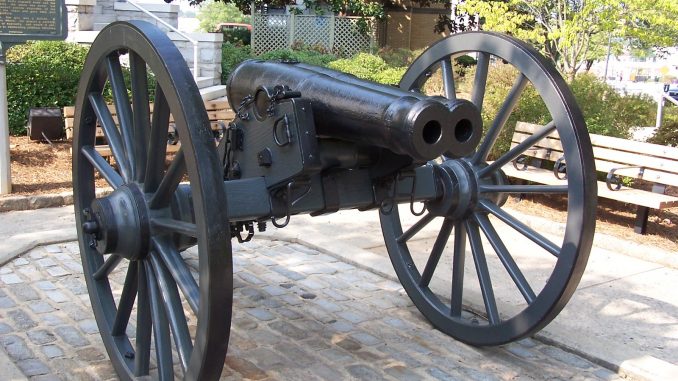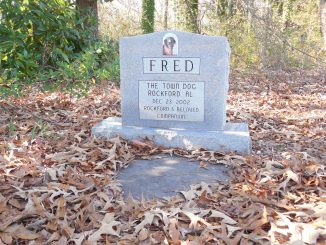
Based on the 1642 design of Florentine gun maker Antonia Petrini, this civil war era double-barreled cannon was (just like the Confederate States) a colossal failure based on ignorance. The American Civil War saw quite a few new and advanced weapons but the “Double-Barrelled” Cannon, also known as Gilleland’s Gun, is perhaps one of the most ridiculous every invented. And while it was designed for warfare, the experimental weapon not only never saw battle, but didn’t work at all.
The concept is that the cannon would fire both barrels simultaneously, firing the chain-linked cannon balls down the battlefield like a scythe to chop enemy soldiers like so many standing stalks of wheat. This is not what happened…
In 1862, John Gilleland, a dentist, builder, mechanic, and private in the Georgia home guard company the “Mitchell Thunderbolts” raised $350 from a coterie of Confederate citizens in Athens, Georgia, to build the cannon. Cast in a single solid piece, the side-by-side bores are each a little over 3 inches in diameter and splayed slightly outward to stretch the chain taut after it was fired.
When Gilleland’s Gun it was tested on April 22, 1862, it took aim at two upright poles. The uneven combustion of powder of the independent but connected barrels caused the balls to spin rather than fly out of the cannon and this was the beginning of the disaster. One witness reported that the first firing “Plowed up about an acre of ground, tore up a cornfield, mowed down saplings, and then the chain broke, the two balls going in different direction”.
When it was fired a second time, the chain shot into a thicket of young pine resulting in what another witness reported as looking “as if a narrow cyclone or giant mowing machine had passed through”.
On its third and final firing, the chain immediately snapped. One ball tore into a nearby cabin, knocking down its chimney and the other struck a nearby cow, killing it instantly. Gilleland, with a degree of hubris only a true confederate sympathizing dentist could have, considered the tests a wild success.
Despite the failure of his cannon, Gilleland tried to promote it to the Confederate State Army arsenal in Augusta, Georgia. Unsurprisingly it was deemed unfit for purpose and was passed for approval. As a token gesture the cannon was used several times as a signal gun to warn of advancing United States troops.
Now serving as a monument to Confederate stupidity, the double-barrelled cannon is a landmark located in front of City Hall in the historic district of downtown Athens, Georgia. Now looked upon as a curiosity and local landmark, the cannon is one of the most popular attractions in a city that is actually quite charming. It is also still pointed northward in a symbolic (but ridiculous) gesture of defiance against the forces it was designed to destroy.
Double-Barrelled Cannon Facts
- During tests the double-barreled cannon mowed down trees, destroyed a cornfield, knocked down a chimney, and killed a rather surprised cow.
- None of the damage caused by test-fires of the cannon were anywhere close to the intended target.
- The cannon was once featured by “Ripley’s Believe It or Not.”
- A treatise that describes Antonio Petrini’s cannon survives in the Royal Armories of the Tower of London.
- Gilleland’s gun sits in front of City Hall in Athens, GA, at the corner of College and Hancock
Avenues. - The barrels of the cannon diverge at ~3 degrees and fired six pound cannon balls connected by roughly 8-10 feet of chain.
- In 1891 the cannon disappeared and was not seen for twelve years.
- The cannon is approximately 13 inches wide and 4 feet 8 1/2 inches long.
- The double-barrelled cannon was equipped with three touch holes. One for each barrel and one that would allow both barrels to be fired simultaneously.


